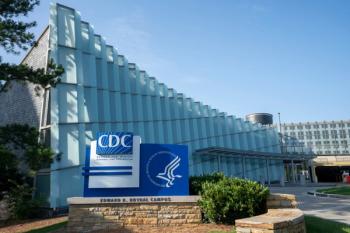
Cancer Diagnoses Bring Major Financial Burden for Privately Insured Adults
Key Takeaways
- Younger cancer patients with private insurance face substantial OOP costs, exceeding $3500 in the first six months post-diagnosis, especially for advanced-stage cancers.
- The study highlights the financial burden on patients not eligible for Medicare, emphasizing the need for better patient-focused policies.
Investigators sought to measure and attribute out-of-pocket costs to cancer stage and by diagnosis.
Although much is known of cancer diagnoses and the related financial implications among an older patient population, especially those with
Data published online today
Using US administrative claims data from the Surveillance, Epidemiology, and End Results (SEER) cancer registry, they measured these costs among a cohort of 46,158 patients, of whom 19,656 had cancer and 26,502 made up the control group. Of the patients with cancer, the most common was
“Several obstacles have made estimating OOP [costs] associated with specific cancer diagnoses difficult in the privately insured US adult population,” the study authors wrote, pointing to inadequate survey-based datasets, claims databases, and inconsistent staging information. “A link between claims and clinical data is necessary to identify patient populations most at risk for high OOP [costs]. While the linkage between Medicare claims records and SEER data has been explored, such linkages have remained elusive for the privately insured population.”
According to the National Cancer Institute, female breast cancer, colorectal cancer, and lung cancer incur the highest national medical costs, and female breast cancer and lung cancer have the highest oral prescription drug costs.2 In 2020 alone for breast cancer, projected total annual medical costs topped $29.8 billion.3
Overall, the patients with cancer were older, at ages 52 to 57 years vs 42 years for the control cohort, and they had more comorbidities. Per the Elixhauser Comorbidity Index, patients with breast cancer had at least 1 comorbidity (P < .001), patients with lung cancer had at least 2 (P < .001), and patients with colorectal cancer had 1 (P = .002).
For this analysis, the stage at diagnosis ranged from 0 to IV for breast cancer and I to IV for lung and colorectal cancers. Significant differences were not seen in monthly OOP costs before diagnosis, but the authors saw a spike for all 3 cancers in the month of diagnosis and noted OOP costs remained higher for the patients with cancer vs the patients not diagnosed for at least 6 months after diagnosis.
Drilling down to each cancer type, these were the mean OOP costs:
- Breast cancer:
- Total in 6 months before diagnosis: $2393 ($3145) (stage 0) to $2967 ($2451) (stage IV) (P < .001)
- Monthly average at 6 months before diagnosis: $109 ($398) to $108 ($534), respectively (P = .04)
- Monthly average from 6 months before to date of diagnosis: $342 ($449) to $424 ($350) (P = .001)
- Lung cancer:
- Total in 6 months before diagnosis: $3125 ($2639) (stage 0) to $3406 ($2957) (stage IV) (P = .04)
- Monthly average at 6 months before diagnosis: $165 ($545) to $103 ($399), respectively (P = .09)
- Monthly average from 6 months before to date of diagnosis: $446 ($377) to $487 ($422) (P = .04)
- Colorectal cancer:
- Total in 6 months before diagnosis: $2563 ($2417) (stage I) to $3330 ($2770) (stage IV) (P < .001)
- Monthly average at 6 months before diagnosis: $101 ($423) to $83 ($480), respectively (P = .85)
- Monthly average from 6 months before to date of diagnosis: $366 ($345) to $476 ($396) (P < .001)
By stage, per estimated difference-in-differences (DID) OOP changes in the first 6 months after diagnosis, patients with cancer paid the following higher monthly OOP amounts vs patients who did not have cancer:
- Stage 0: $462.01 (95% CI, $417.92-$506.11)
- Stage I: $563.05 (95% CI, $503.51-$622.59)
- Stage II: $660.70 (95% CI, $581.38-$740.01)
- Stage III: $696.52 (95% CI, $609.28-$783.77)
- Stage IV: $719.97 (95% CI, $626.11-$813.83)
The authors note that these differences “underscore the financial burden of cancer care on patients with insurance who are not yet eligible for Medicare.” They also underscore the pervasiveness of financial toxicity—which currently affects even cancer survivors—and its negative impact on quality of life and health care access after diagnosis.4
“Our understanding of this phenomenon among individuals enrolled in Medicare is relatively thorough. However, our understanding of financial toxicity outside of the Medicare population is relatively poor,” they concluded. “Along with data sparsity, there is vast variation in health insurance plans available to individuals and households, contributing to substantial heterogeneity in what costs a patient may have after diagnosis.”
They suggested there is a need for better patient-focused policies that consider both insurance continuity and financial assistance. However, their findings are limited by their DID approach, potential for differential attrition (loss of insurance coverage), and lack of data on reasons for dropping insurance and all-payer claims. They also did not include indirect costs, such as travel and lost wages, which they noted fall outside of the accepted definition of OOP costs.
References
- Rose L, Rajasekar G, Nambiar A, et al. Estimated out-of-pocket costs for patients with common cancers and private insurance. JAMA Netw Open. 2025;8(7):e2521575. doi:10.1001/jamanetworkopen.2025.21575
- Financial burden of cancer care. National Cancer Institute. Accessed July 21, 2025.
https://progressreport.cancer.gov/after/economic_burden - Shuai X, Renna F. The cost of breast cancer in the United States. Chmura. October 1, 2024. Accessed July 21, 2025.
https://www.chmura.com/blog/the-cost-of-breast-cancer-in-the-united-states#ftn1 - Smith GL, Lopez-Olivo MA, Advani PG, et al. Financial burdens of cancer treatment: a systematic review of risk factors and outcomes. J Natl Compr Canc Netw. 2019;17(10):1184-1192. doi:10.6004/jnccn.2019.7305
Newsletter
Stay ahead of policy, cost, and value—subscribe to AJMC for expert insights at the intersection of clinical care and health economics.





























































